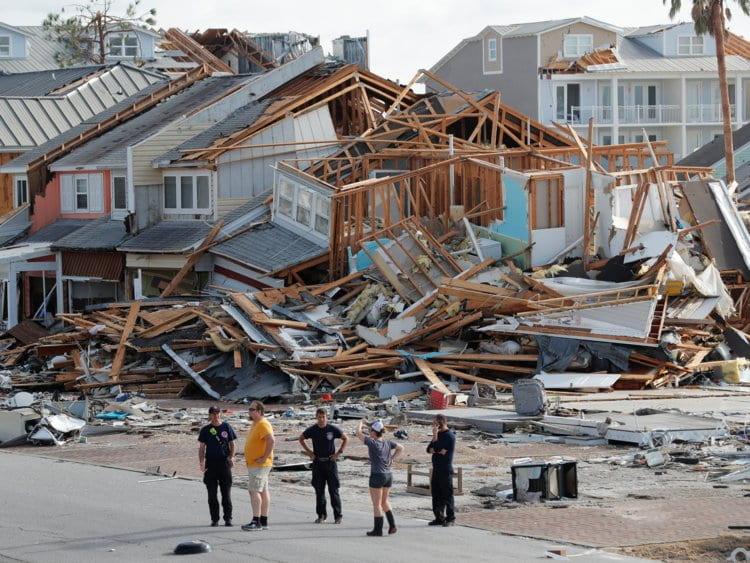Doris Pace
South Bureau Chief
Florida residents know that when hurricane season begins, preparations begin as well. We stock up on canned goods, flashlights, batteries, water, put up shutters and take inventory of our possessions. We know the drill. We hope for the best and prepare for the worst but nothing could have prepared the Florida panhandle for hurricane Michael and the aftermath that hard-hit areas are still dealing with today.
Hurricane Michael started off as a slow weather development but once it gained momentum it quickly became a deadly hurricane. On Oct. 7, 2018 Michael was just a tropical depression. One of many we had experienced this season. Two days later, in what seemed like a blink of an eye on Oct. 9, the depression had become a full on vicious category 4 hurricane and by Oct. 10, Michael had made landfall on the panhandle near Mexico Beach.
The quick development caught many residents of the Florida panhandle off guard. Normally we track a weather system and have enough time to prepare. With hurricanes, we usually have at least a week. Giving us enough time to secure homes, make arrangements and save our most precious memories. Michael moved so quickly that Floridians had days and in some cases just hours to evacuate. For many that simply was not enough time. By Wednesday morning it was too late to leave. For some, the plan had always been to stay and ride out the storm.
The resident’s that stayed behind fought for their lives as Hurricane Michael’s eyewall hit 5 miles from Mexico Beach and made landfall with wind speeds of 155 miles per hour, according to weather.com.
During the time Michael moved over Florida, the winds, storm surge and flooding destroyed whole communities bringing them down to rubble. Trees were ripped from roots, sides of buildings crumbled, roads cracked and flooding and storm surge became a danger. Florida had not seen wind speeds this strong since 1992 when Andrew leveled parts of South Florida. Michael is the strongest hurricane the panhandle has ever experienced.
The day after the hurricane, all of Florida mourned the loss of the panhandle communities that had been destroyed in a matter of hours and FEMA declared the areas in Michael’s path a state of disaster. In total, 5 counties where declared areas of disaster.
News footage of the aftermath was difficult to watch and for those that lived through Andrew in the early nineties, it was like watching a replay of what they had lived through back then. Ginger Zee, ABC News Chief Meteorologist described what she saw as “…eerily reminiscent to the scene I Saw in Gulfport Mississippi 2005’,’ referring to the Katrina aftermath.
Once it was cleared for evacuees to return home those that lost everything had a choice to make. Do they start new and rebuild or go somewhere else and leave everything they called home behind?
During the days that followed while many were still reported missing, the lack of power gave criminals an edge. Looters began to ransack homes and take the few precious personal possessions Michael had not already destroyed. Now residents had to face the destruction of their material possessions but their spirits as well.
Many residents and neighbors throughout the rest of Florida share senator Marco Rubio’s sentiment. Rubio tweeted his biggest fear and said “Mexico Beach is gone…but I will confess that my biggest fear is that this part of Florida with its genuine characteristics will never be the same.”
This kind of stress weighs heavily on a person’s mind and the level of traumatic catastrophe can cause mental stress even years after the event. Together as we always have we will rebuild, reinforce and rise better than before.
algd@mail.broward.edu
photo: Some of the devastation from Hurricane Michael in the Panhandle. Photo Courtesy of Business Insider
